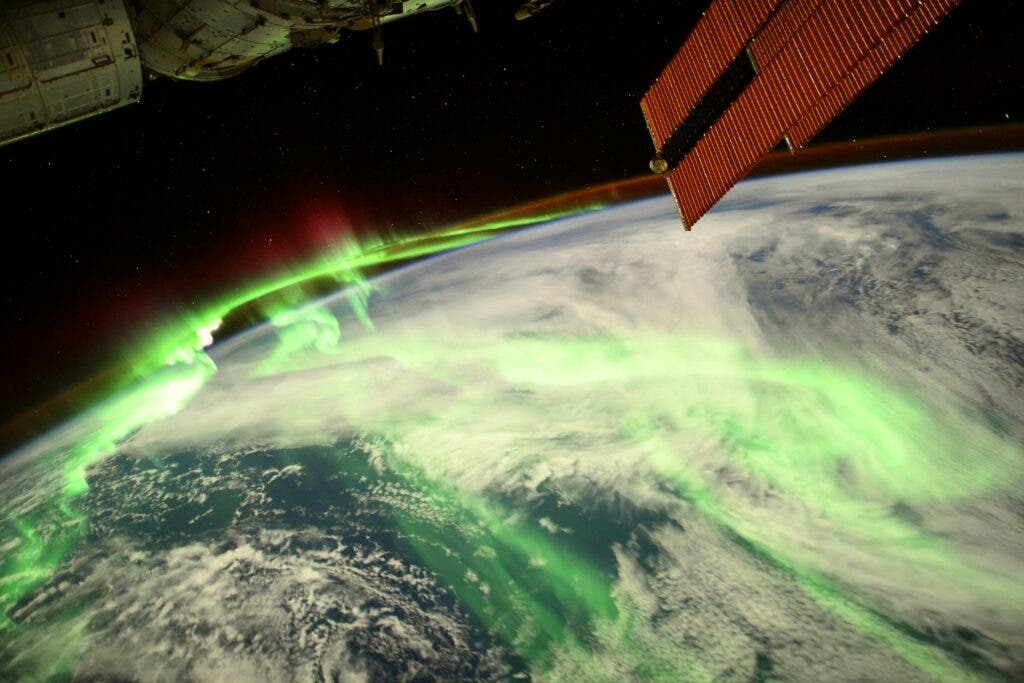While it might not be as well-known as the northern lights (or Aurora Borealis), the Aurora Australis can be just as spectacular, especially if you’re looking at it from space. Thomas Pesquet, a photographer and an astronaut from the European Space Agency shared an impressive photo of the southern lights taken about 250 miles (402km) above Earth.

The photo, which Pesquet published on his Flickr account and on other social media networks, is among the best images of the aurora ever captured from the International Space Station (ISS), where he’s based. It shows green ribbons across the Earth going high up in the atmosphere and then fading away into spikes of red light in the distance.
“I don’t know why we saw so many in the span of a few days, when I barely saw one during my entire first mission, but these last ones came with something extra,” Pesquet wrote on Facebook. “As the Moon was high and bright, it lit up the clouds from above, which created a distinct atmosphere and almost turned the aurora blue.”
Pesquet was selected by ESA as a candidate in 2009 and successfully completed his basic training in 2010. He was sent to space first in 2016 for six months and then again in April on board of the SpaceX Crew Dragon, both times staying at the ISS. He frequently posts photos and videos on social media, including him running at the ISS.
Anyone going to space is very likely to see the northern or southern lights just like Pesquet. In fact, the recent SpaceX first tourist crew saw just that while orbiting Earth earlier this month. The mission’s commander, Jared Isaacman, replied to Pesquet’s photo on Twitter, saying he and his crew had seen the aurora but “not like that.”
The impressive auroras
While best seen at night, auroras are actually caused by the Sun. They are the result of charged particles reaching our planet. The particles are channeled to the poles by Earth’s magnetic field and then interact with particles in the atmosphere. This is always happening, but sometimes the Sun sends bigger particles, producing striking auroras.
Une aurore australe sous la lumière de la lune 🤩
.
Clouds compete for attention in this aurora timelapse over a blue ocean.#MissionAlpha pic.twitter.com/r9y1t2MgPp— Thomas Pesquet (@Thom_astro) September 14, 2021
The Aurora Australis, the one seen by Pesquet from space, is the southern hemisphere counterpart to the more famous Aurora Borealis. It takes shape of a curtain of light, or a sheet, or a diffuse glow, mostly red and green. It’s strongest on the south magnetic pole, making Antarctica the best place to see them happening, especially at night.
When the solar cycle is near its maximum, the Aurora Australis can be visible in New Zealand (especially the South Island), southern Australia (especially Tasmania), southern Chile and Argentina and sometimes in South Africa too. They are typically 100 to 300 kilometers high, but sometimes can reach up to 500 kilometers high.
So, if going to space as a tourist isn’t something for you, with tickets still a bit steep and only for billionaires, better think of making a visit to some of the southern or northern countries to check the aurora. Either if it’s the australis or the borealis, they are both equally impressive and worth planning a trip to check them out.









